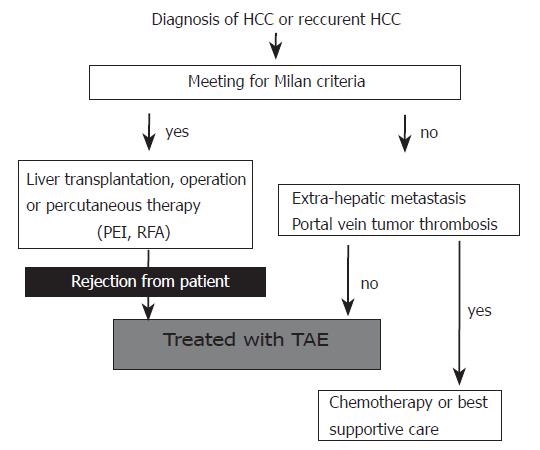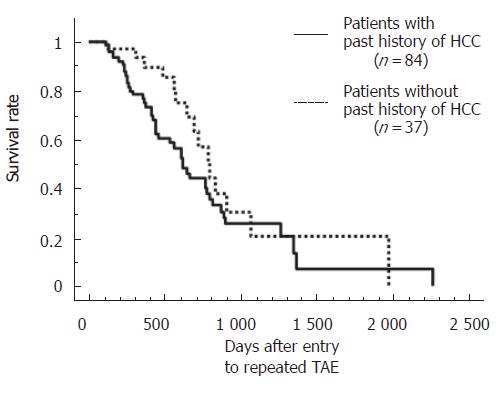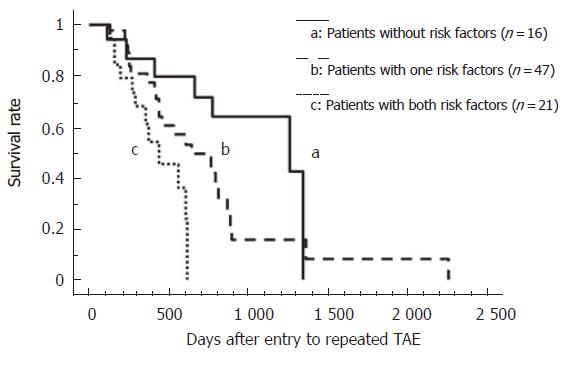Copyright
©2006 Baishideng Publishing Group Co.
World J Gastroenterol. Apr 7, 2006; 12(13): 2075-2079
Published online Apr 7, 2006. doi: 10.3748/wjg.v12.i13.2075
Published online Apr 7, 2006. doi: 10.3748/wjg.v12.i13.2075
Figure 1 Strategy for treatment of HCC employed at our institution.
Nearly all patients with HCC, which were outside of the Milan criteria, were recommended for a repeated TAE course.
Figure 2 Survival rates of HCC patients with or without past treatment for HCC.
There was no significant difference between the 2 groups. Survival rates after 1, 2, and 3 years were 90%, 57%, and 20% respectively for patients without past treatment, and 75%, 43%, and 25% respectively for patients with past treatment.
Figure 3 Survival rates of HCC patients with past treatment and with or without the 2 risk factors found in the present study.
Significant differences were shown between “a” and “b” and between “b” and “c” (P < 0.01 and P = 0.01), while there were no significant differences between “a” and “b” (P = 0.08). a: Patients without either factor [existence of bilobular tumors and high concentration of AFP (greater than 100 ng/mL; n = 16)]; b: Patients with one of the factors (n = 47); c: Patients with both factors (n = 21).
- Citation: Hiraoka A, Kumagi T, Hirooka M, Uehara T, Kurose K, Iuchi H, Hiasa Y, Matsuura B, Michitaka K, Kumano S, Tanaka H, Yamashita Y, Horiike N, Mochizuki T, Onji M. Prognosis following transcatheter arterial embolization for 121 patients with unresectable hepatocellular carcinoma with or without a history of treatment. World J Gastroenterol 2006; 12(13): 2075-2079
- URL: https://www.wjgnet.com/1007-9327/full/v12/i13/2075.htm
- DOI: https://dx.doi.org/10.3748/wjg.v12.i13.2075











